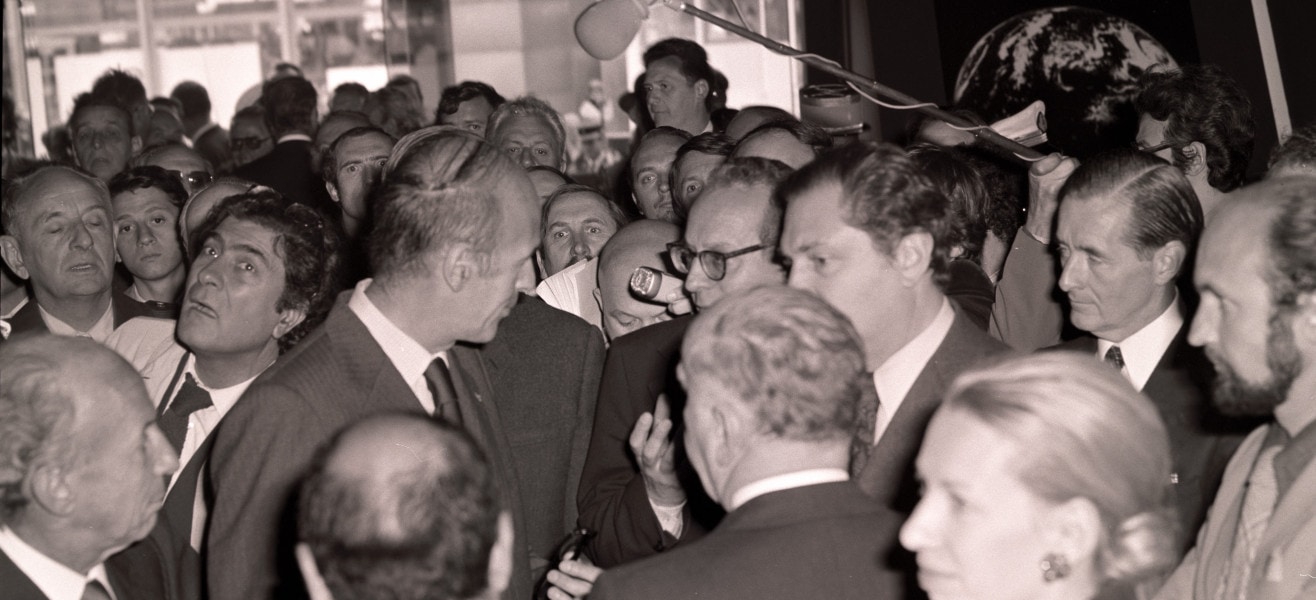Alongside our activities opening new document collections, the Archives team continues to digitise the historical picture collections held by the European Centre for Space Records, opening images on a year-by-year basis in the SHIP database. We are currently working our way through the 1970s and have now reached the landmark year of 1975; particularly close to our hearts as it signals a new chapter for European endeavours in space with the creation of ESA.
In a development of some of the themes encountered in earlier collections, 1975 was characterised by the opposing forces of continuity and rupture. The most obvious rupture took place on 30 May 1975 when the Final Act of the Conference of Plenipotentiaries in Paris established the conditions for signature of the ESA Convention. The Convention was signed on the same day by Belgium, Denmark, France, the Federal Republic of Germany, Italy, the Netherlands, Spain, Sweden, Switzerland and the United Kingdom and ESA came into being.
As a result, the first ESA stand was present, at the exact same moment and on the other side of Paris, at the 1975 International Paris Air Show at Le Bourget Exhibition Centre, which took place from 30 May to 15 June! (And ESA was, of course, also represented at the 2023 show, which recently concluded on 25 June). The photograph above shows French President, Valery Giscard d'Estaing, visiting the Salon.
However, the photographer who captured both of these milestone events (find out more about Robert Duhem) offers a glimpse of continuity, as we see that the ESRO photographers were employed by ESA and their work proceeded without interruption. And the same applies to many ESRO projects, which were continued under the banner of ESA.
Rupture was also a theme across Europe, with the year bookended by two figures who continue to divide opinion to this day. In February 1975, the British Conservative Party elected Margaret Thatcher as its first woman leader. Mrs Thatcher therefore became Leader of the Opposition, prior to becoming Britain’s first woman Prime Minister in 1979. Towards the close of the year and at the other end of the continent, the death of General Francisco Franco in November signalled the end of an era in Spain. While we strike a bittersweet note half-way through the year remembering the first United Kingdom referendum on Europe of 6 June, where the UK voted ‘yes’ to staying in the European Economic Community.
In the arts, Paris was once again the venue for a groundbreaking event: the first César Awards ceremony, presented by the French Académie des Arts et Techniques du Cinéma, took place on 3 April 1976 at the Palais des Congrès. The awards honoured the best French films of 1975 and the nominations for Best Actress (along with the relevant directors) are a roll-call of some of the best-loved faces in French cinema, including the winner, Romy Schneider, in L’important c’est d’aimer (directed by Andrzej Żuławski), Isabelle Adjani in her breakthrough role in L'Histoire d'Adèle H. (François Truffaut), Catherine Deneuve in Le Sauvage (Jean-Paul Rappeneau) and Delphine Seyrig for India Song (Marguerite Duras).
More information
To browse the new images, simply search for ‘1975’ in the SHIP database, or refer to our highlight on SHIP for additional details of its functionalities.








